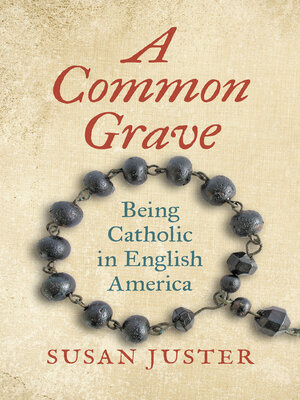A Common Grave
ebook ∣ Being Catholic in English America · Published by the Omohundro Institute of Early American History and Culture and the University of North Carolina Press
By Susan Juster

Sign up to save your library
With an OverDrive account, you can save your favorite libraries for at-a-glance information about availability. Find out more about OverDrive accounts.
Find this title in Libby, the library reading app by OverDrive.



Search for a digital library with this title
Title found at these libraries:
| Library Name | Distance |
|---|---|
| Loading... |
From Nevis to Newfoundland, Catholics were everywhere in English America. But often feared and distrusted, they hid in plain sight, deftly obscuring themselves from the Protestant authorities. Their strategies of concealment, deception, and misdirection frustrated colonial census takers, and their presence has likewise eluded historians of religion, who have portrayed Catholics as isolated dots in an otherwise vast Protestant expanse.
Pushing against this long-standing narrative, Susan Juster provides the first comprehensive look at the lived experience of Catholics—whether Irish, African, French, or English—in colonial America. She reveals a vibrant community that, although often forced to conceal itself, maintained a rich sacramental life saturated with traditional devotional objects and structured by familiar rituals. As Juster shows, the unique pressures of colonial existence forced Catholics to adapt and transform these religious practices. By following the faithful into their homes and private chapels as they married, christened infants, buried loved ones, and prayed for their souls, Juster uncovers a confluence of European, African, and Indigenous spiritual traditions produced by American colonialism.







